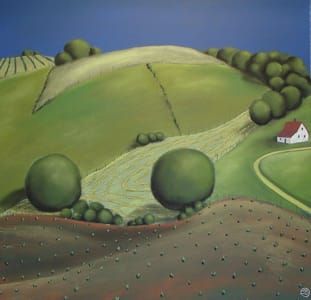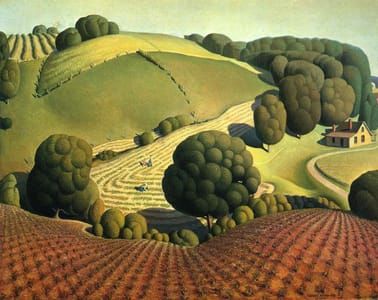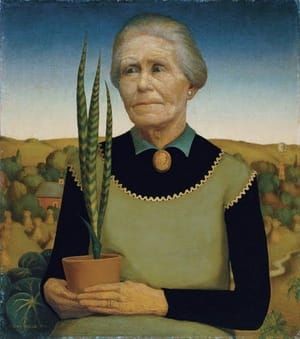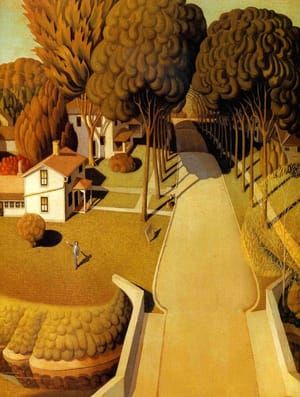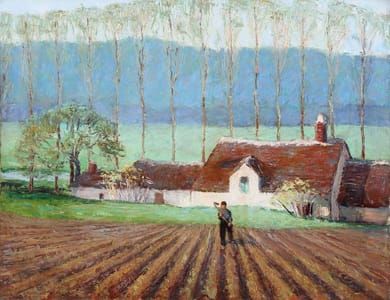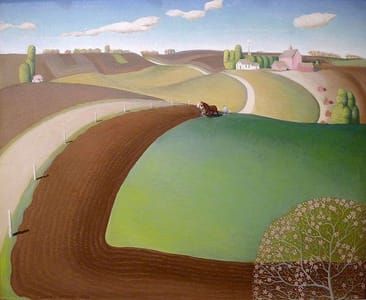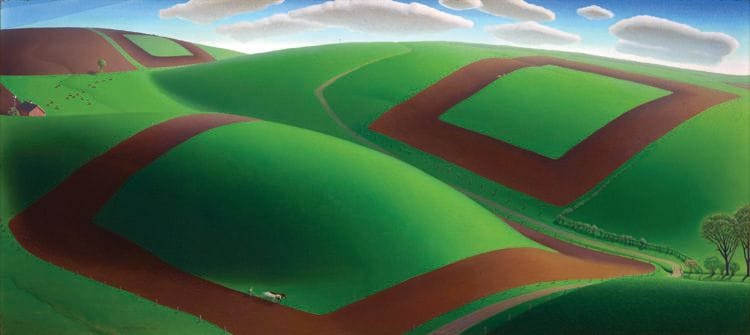

Spring Turning, 1936
Grant Wood
18½ x 40½ in
This extreme perspective—literally the bird’s-eye view—had long been the stuff of popular fascination by the time Wyeth began sketching in 1942, and it carries much ideological baggage. Alan Wallach, professor of art and art history emeritus at William & Mary, finds a genesis of this prospect in the early republic of the United States, specifically in paintings such as Thomas Cole’s seminal 1836 work, View from Mount Holyoke, Northampton, Massachusetts, after a Thunderstorm—The Oxbow. Eschewing classical, 18th-century landscape conventions that discouraged painting from a high vantage point, Cole produced a painting of great authority and intensity.
l
By the third quarter of the 19th century, a hovering perspective came to represent an idealized vision of progress in the popular imagination; burgeoning industrial cities and tidy towns were frequently depicted from a position above the factory bell tower or church steeple....
Celebrated at every turn, this “new standard of measurement” could be found throughout American visual culture by the late 1930s. Artists such as Grant Wood (1891–1942) reveled in the new point of view. Wood’s Spring Turning of 1936 offers a neatly defined earthiness that places the viewer in a paradoxically detached but intimate relationship with the rolling hills of the American Midwest. The new ability to recognize altitude in a comparatively flat and unbuilt land—to place oneself at a great height in the mind’s eye—is crucial to this equation, but the art of the matter is the artist’s skill at simulating the frisson experienced as the horizon slips and the viewer loses confidence in the information generated by the eye.
[https://www.incollect.com/articles/soaring]
© 1936 Grant Wood
Grant Wood
artistArthur
coming soon

